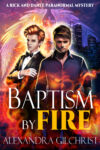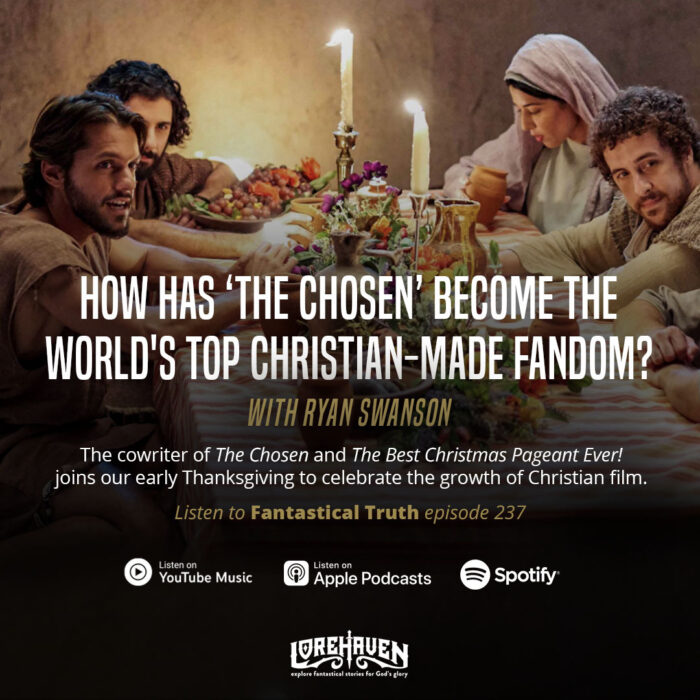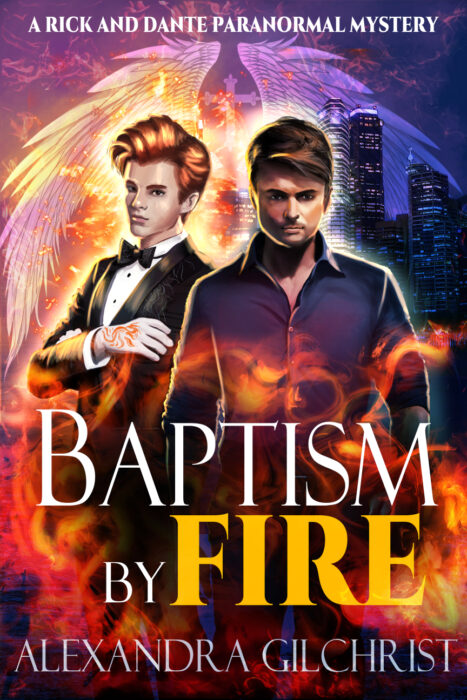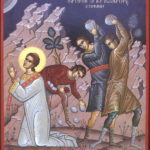Rearranging Icons 4: Characters Becoming Icons
![]() (This series is based on our ongoing email conversation between author Fred Warren and myself, about icons in the Bible, church history, and present-day stories.)
(This series is based on our ongoing email conversation between author Fred Warren and myself, about icons in the Bible, church history, and present-day stories.)
Fred,
Just last week, this series became more current, and not only because of Resurrection Sunday, about the only true “icon,” our risen Savior, Jesus Christ. I say this because a certain entrepreneur and painter, very popular in the evangelical world, happened to pass away on Good Friday, April 6.
That would be Thomas Kinkade, whom you had mentioned in the email you had already written. And though I will broach only the topic of Kinkade’s artwork — not his motives or personality — below, I know this may be a more-controversial topic.
That’s because how we view icons relates to how we enjoy, or critique, a painting like the kind(s) Thomas Kinkade made. It also relates to the idea of growing into an icon.
Icons are inevitable
Though this series has brought some varying views, so far we have not disagreed on anything. It seems most readers, too recognize that icons — i.e., symbolic or graphical representation of a larger series of truths or ideals — are inevitable in our lives.
Whether we look at the history of the Church, modern-day stories, or the Bible itself, we can’t help finding those simple, recognizable icons that are “implanted” in our minds.
And it would seem those who are not aware of how this concept works may likely be taken advantage of, by storytellers, artists, and even ad-makers. (This makes me nearly wonder if that long-since-discredited “subliminal message” conspiracy theory was itself the real conspiracy theory, to distract us from how artists may really influence people!)
This is by no means unknown to the Christian world. We may not have necklaces with Masonic symbols, or simple-lined, flat-colored artwork, like the representations of Jesus Christ that you have included in part 1 and part 3 of this series. But we do have icons.
As you wrote in part 3 on Tuesday:
I think most people never realize this. We Protestants have scrubbed our religious culture of obvious icons, but have become tone-deaf to the meaning and power of the iconic images we’ve gathered to fill that void, many of which send incoherent messages or clash with one another because they’ve been adopted without much thought. I’ve seen some references to the plasma screen as a modern Protestant icon.
This is the first time I’ve heard of the plasma screen in that context. But it makes sense. Other church icons, some of which have replaced older icons, could be: the overhead projector (replacing the hymn book); the guitar (replacing the organ); and the closed-eyes, weaving-body, hands-raised worshipers (replacing a quiet and more-“reverential” posture). Note: I’m not critiquing any of these, old or new. Changes may be inevitable.

Where you do find art displayed in Protestant churches, it’s often a grab-bag of popular images like the “praying hands” you mentioned, or Richard Hook’s Jesus pictures, or the bearded gentleman praying at a table set with a cup and a loaf of bread, or more recently, Thomas Kinkade’s work. Our pastors may not wear vestments, but they have their dark suits and power ties (or chinos and polo shirts). We’ve got lecterns, and banners, and, still, some stained glass windows.
And this is where, as Texans may say, many of our readers will be fixin’ to complain.
Why? Because too often, pastors or church decorators will merely sprinkle in such art as afterthoughts. This isn’t a criticism, merely an observation, and it applies mainly to the stuff that goes on walls, because by contrast, vestments and stained-glass windows are expected, and the lectern necessary. Yet for the praying-hands paintings or framed prints of a Thomas Kinkade work, they’re mainly there to fill space. Very likely a pastor, elder, deacon, whomever, feels no need to ask deeper questions about a work of art and how its presence in a church building will honor God. Perhaps also, that is not their job.
All these are likely limited to church services. But icons certainly are not. We find them on TV — negative stereotypes, such as bumbling sitcom dads — and in many stories — positive archetypes, such as fantasy heroes who sacrifice themselves. And as you noted, Scripture itself serves as an icon, by the image of the open book, and by revealing Christ.
Icons in artworks
This brings me to a brief analysis of Thomas Kinkade, fleshing out a modern example of how icons are not bad, only abused. Kinkade paintings, and some fans, may reveal this.
First, take a look at this. It’s not just at another artsy criticism of Kinkade as some sell-out (which may be an unfair personal attack anyway, especially after he has just died). It’s also not another emotional defense of his works. Rather, it’s a comparison, between Kinkade’s earlier artworks and his more-popular, light-drenched, firm-lined images.
I am no art critic. But I begin to see why people fault Kinkade’s later works. Once I had thought those critics merely wanted “gritty,” “real-world” stuff, and disliked visual representations of an ideal. I now see, though, that the better critics fault Kinkade not for imagining the perfect world of the future, when sin and death are over and Christ reigns, but for imagining and imaging a nonexistent “universe.” In the Kinkade-verse, serious sin never existed. Not only do you not have to worry about it now, you never did. I’m not sure how that provides true comfort, and reflections of God’s grace, to viewers.
This is because in the real world, you need to get through sin before being perfect.
However, I also suggest it’s not wrong to enjoy Kinkade’s paintings. They are what they are: iconic. One can quibble whether these icon are helpful. But to blast them simply for being iconic, for not including my favorite topic or for not exactly representing a real-world Cottage By the Seashore, would be silly, even legalistic.
Not knowing much about Kinkade’s career, and not wanting to make this about a person, I can still suggest this: Kinkade should not be blamed for these kinds of images. Rather, we should ask: why do people clamor for them? What do they see reflected that might actually result from legitimate desires? How might those desires be misdirected or endorsed by the wrong kinds of iconic visual art? How can we repair that corruption?
Stories: from characters to icons
The answer may be the same as the reason why we’re writing a series about a broader art-related topic on Speculative Faith, with its emphasis on Christian visionary fiction:
Epic stories glorify our Author by showing the growth of characters into “icons.”
You said this here:
I think this is a central issue of this series, the fact that when we tap into the strongest, most universal icons in our fiction, we create a powerful resonance in the mind of the reader. Very little “telling” is necessary. You see the image in your mind, and you know. “There’s truth here, and somewhere deep within me, I recognize it.” The truer the archetype, I think, the stronger the reaction, which leads directly to your point about Jesus as the ultimate icon.
This may be why people are put off by Kinkade paintings, or novels that have clichéd characters. To them, they’re not “just entertainment” or “just pretty.” Instead they see storytelling and beauty as only means to recognizing that greatest truth: the ultimate Author/Artist, Jesus Christ, the only true combination of Character and Icon.
That leads to my suggestion for defining a character, as opposed to an icon. You said:
I might suggest that the difference between a “character” and an “icon,” in the literary sense, is more an issue of scope than physicality. A character seems to me to be more of a specific case that may incorporate elements of an icon, or several icons. It conveys truth, but not its fullness. If Jesus is an icon, we, his servants and disciples, are characters that in turn reflect His perfect image, as yet imperfectly.
Thus, as Jesus images or “icons” (verb) the Father, so we image or “icon” Jesus — or so we should, and so someday we will! If that’s true, then, characters in a novel are images of us. In this they are one more degree removed from Christ, but still, they help:
A character is a human figure, shown, described and/or followed in an artwork, song, movie, play, or novel. Unlike icons, a character is not ideal. He or she is “real world,” with all the limitations, likely even sins, that we would expect.
What do you think?
I agree that the difference between characters and icons is not one of physicality, but of scope. A character is trying to be an icon, an image of the Greater, but hasn’t yet arrived. This leads to a story’s plot. Heroes (and even villains) have not yet achieved their goals.
Thus, a novel that has little to no plot, but presents fake characters that have not yet really gone through this process (e.g., the Perfect Wife or Husband) strikes us as absurd.
Icons are for ideals, and the Ideal God. Not for us. Not for characters who “image” us.
If Christ Himself, the exact image of the Father Who never sinned, had to go through a long, arduous process to achieve His goal, why not us? And why not also characters in a story, who “image” us as we image Christ? They must also pass from characters to icons.
That seems to reflect the truth of the resurrection. As “characters” now, we are far less than ideal. We sin. We die. Yet Christ has begun changing us from the inside. We already had God’s Image about us; now it’s begun to be fully restored from within, thanks to the Spirit Who regenerated our spirits. Next comes our bodies. In the future, they will be resurrected, just as our spirits are resurrected now (Romans 8). So will creation.
Will we then only be boring icons? Like the dull sitcom dad who never learns? Like a flat image of frowning Jesus? Like the painting of an idealized and cottage-intensive world?
I don’t think so. As resurrected human beings, we will have that process behind us. What a great conversation-starter! With that life story, “iconic” life could never be boring, and certainly not when we could have never become “icons” of Christ without having been characters first. We already see this in stories. It’s not difficult to imagine about real life.
That might have gone overlong. But it’s an in-depth topic to explore! What do you think about exploring specific examples, by name, in our next two columns — one apiece — with the help of readers, before we likely wrap up by part 6?










































I have seen some of the older Thomas Kinkade work, although I wasn’t exactly analysing it at the time. It’s interesting to see the difference, and how it might reflect certian changes in his perspective.
I’d say that if we are going to go after Kinkade for his work and the ideals represented therein, then go all out for everyone. I love Star Trek, and am only using it as an example as it occurred to me first. Prior to when the big wigs at Paramount took the reins from Roddneberry, the Trek universe tried to push some very disturbing and false stuff, alongside the good stuff.
Among these is the false “ideal” of a utopian future with religion virtually extinct. Very few practice it in this future as Roddenberry foresaw, and those who did were smilingly and condescendingly tolerated by the “enlightened” vast majority of lifeforms. To put it this way, it would not be saying anything hyperbolic to state that Roddenberry was a virulent atheist who pretty much hated religion and would’ve probably thought of Richard Dawkins as a sell-out for not being quite mean and sarcastic ENOUGH about it.
I adore Star Trek and can see a lot to admire about the ideas introduced of honor, understanding and the beauty of the creation. Perhaps we’ll see other dimensions and worlds on the New Heaven/New Earth. Who knows? It gives a person a wonder of God’s creation, despite being the work (prior to mid-90’s) of an atheist crank. In fact that’s why Roddenberry disliked some of the novels for referring to religion (especially in *gasp!* a positive light), as he believes the “ideal, enlightened” man will be beyond that stuff eventually.
The point here is not to trash Roddenberry or his work, in fact I like the original series and DS9 best (one before and one after Roddenberry) of all the television Trek franchises, but to say that if we are going to go after one person for not showing the Fall, then oughtn’t we to go after another for trying to reflect some idiotic dream of man reaching a utopian age with not even a NEED of redemption?
I adore Star Trek, so please don’t say I’m not a true fan, but I have to be honest and point out when folks go after one person while ignoring a pretty disturbing guy whose work was more popular.